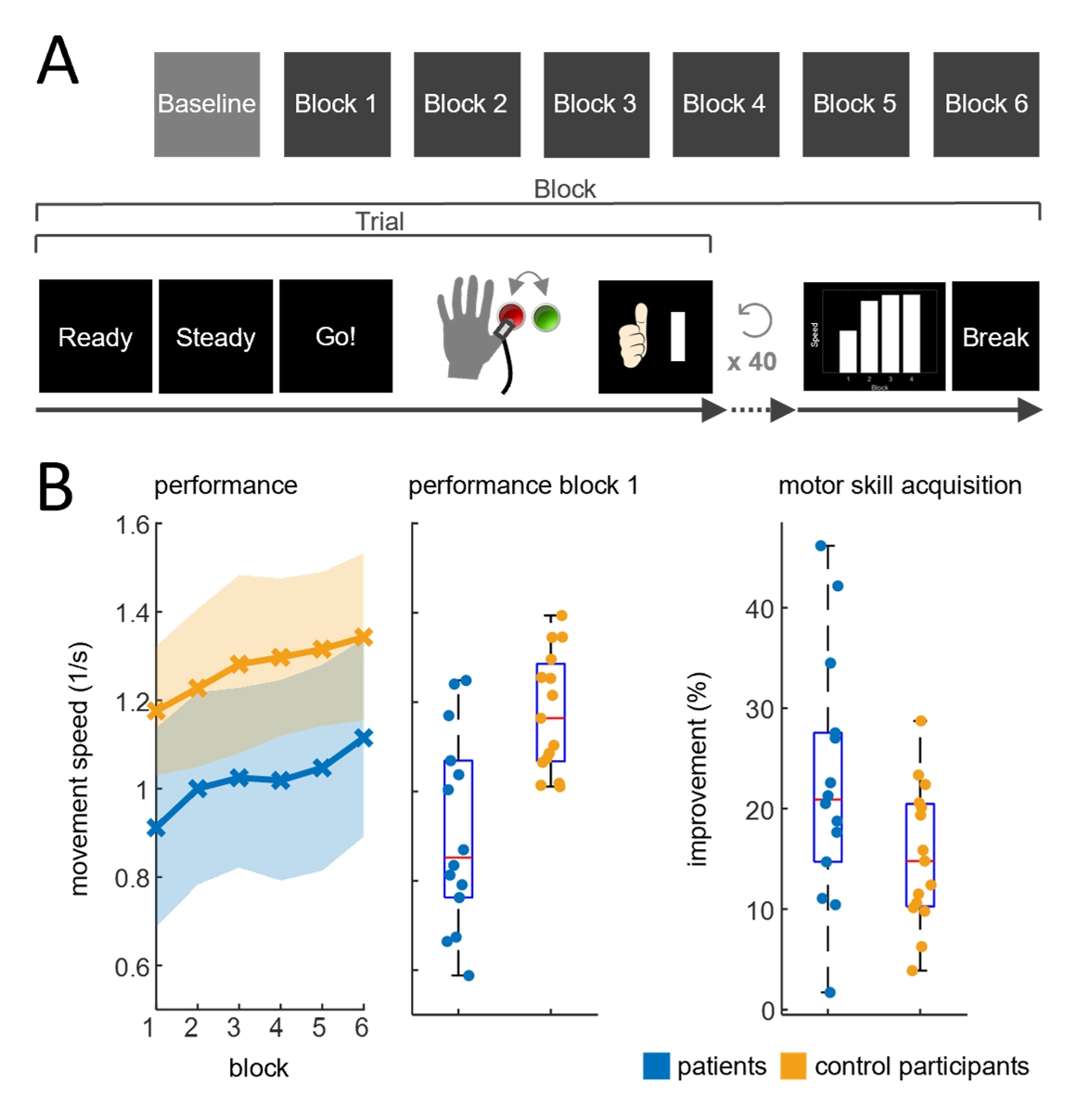Understanding the underlying neuronal mechanisms of motor skill acquisition after stroke plays an essential role in designing new therapeutic approaches. Movement event-related synchronization (ERS) in the beta-band (~13-30 Hz) has previously been related to motor learning in healthy participants (Tatti et al., 2021) and has been shown to be reduced in stroke patients (Kulasingham et al., 2021; Parkkonen et al., 2017; Tang et al., 2020). Here, we investigate whether beta ERS is related to motor skill acquisition in chronic stroke patients.
We recorded MEG data from 14 chronic stroke patients and 15 age-matched control participants during a feedback-guided motor skill acquisition task. The task aimed to increase the speed of button presses conducted with the thumb (the affected hand for stroke patients, and the hand corresponding to the stroke group in the control group) (Fig.1A). Movement speed was calculated as the reciprocal of the time taken between the initial and fourth button press. Motor skill acquisition was defined as the relative increase of movement speed from the first to best block. Patients were characterized with standardized clinical tests. MEG data were preprocessed and projected into source space, using individual structural images if available. The ERS was calculated between 0.6-1.4 s after the last button press in the range from 14-28 Hz. We computed differences in beta ERS between stroke patients and control participants in source space using permutation-based cluster statistics. Using linear mixed models, we related residual motor function and well movement speed and motor skill acquisition to the ERS.
Stroke patients were mildly impaired with a median UEFM of 63.5 [range: 46-66]. Movement speed was significantly lower in stroke patients than in in control participants [p<0.001; patients: 1.01 ±0.22 1/s; control participants: 1.27 ±0.17 1/s; mean ± standard deviation] (Fig.1B), however motor skill acquisition did not differ in both groups [p=0.22; patients: 22.6 ±12.2%; control participants: 15.3 ±7.0%; mean ± standard deviation]. The beta ERS was significantly lower in stroke patients compared to control participants in a cluster located over the frontal lobe, covering ventral premotor cortex [p<0.001] (Fig.2A). In control participants, beta power measured in this cluster was positively related to motor skill acquisition in the task, hence participants with greater improvement over time had a higher ERS (Fig.2B). This relation was inverted in stroke participants. The ERS was not related to residual motor function from standardized clinical tests.
We report an association of beta ERS over secondary motor areas and motor skill acquisition. Even though motor skill acquisition is still evident in stroke patients, the underlying neuronal mechanisms may be altered in stroke as the relation of motor skill acquisition and ERS shows diverging results in both groups.
Fig.1 A) Overview of Task B) Task performance (movement speed) and motor skill acquisition in patients and control participants
Fig.2 A) Differences in beta ERS between stroke patients and control participants (results of permutation-based cluster statistics) B) The association of motor skill acquisition and ERS in patients and control participants. Improvement predictor effect for each group from linear mixed effect modeling


